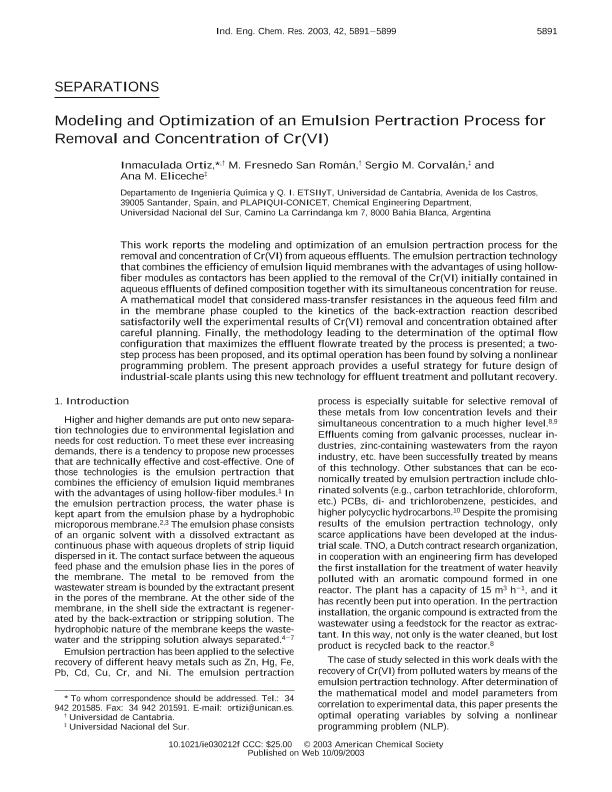Artículo
Modeling and Optimization of an Emulsion Pertraction Process for Removal and Concentration of Cr(VI)
Fecha de publicación:
01/11/2003
Editorial:
American Chemical Society
Revista:
Industrial & Engineering Chemical Research
ISSN:
0888-5885
Idioma:
Inglés
Tipo de recurso:
Artículo publicado
Clasificación temática:
Resumen
This work reports the modeling and optimization of an emulsion pertraction process for the removal and concentration of Cr(VI) from aqueous effluents. The emulsion pertraction technology that combines the efficiency of emulsion liquid membranes with the advantages of using hollow-fiber modules as contactors has been applied to the removal of the Cr(VI) initially contained in aqueous effluents of defined composition together with its simultaneous concentration for reuse. A mathematical model that considered mass-transfer resistances in the aqueous feed film and in the membrane phase coupled to the kinetics of the back-extraction reaction described satisfactorily well the experimental results of Cr(VI) removal and concentration obtained after careful planning. Finally, the methodology leading to the determination of the optimal flow configuration that maximizes the effluent flowrate treated by the process is presented; a two-step process has been proposed, and its optimal operation has been found by solving a nonlinear programming problem. The present approach provides a useful strategy for future design of industrial-scale plants using this new technology for effluent treatment and pollutant recovery.
Palabras clave:
MODELLING
,
OPTIMIZATION
,
EMULSION
,
PERTRACTION
Archivos asociados
Licencia
Identificadores
Colecciones
Articulos(PLAPIQUI)
Articulos de PLANTA PILOTO DE INGENIERIA QUIMICA (I)
Articulos de PLANTA PILOTO DE INGENIERIA QUIMICA (I)
Citación
Ortiz, Inmaculada; San Roman, María Fresnedo; Corvalan, Sergio; Eliceche, Ana Maria; Modeling and Optimization of an Emulsion Pertraction Process for Removal and Concentration of Cr(VI); American Chemical Society; Industrial & Engineering Chemical Research; 42; 23; 1-11-2003; 5891-5899
Compartir
Altmétricas




